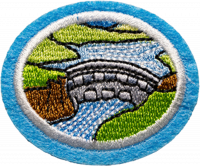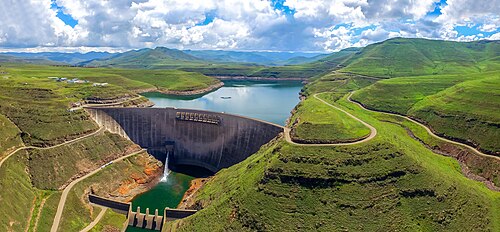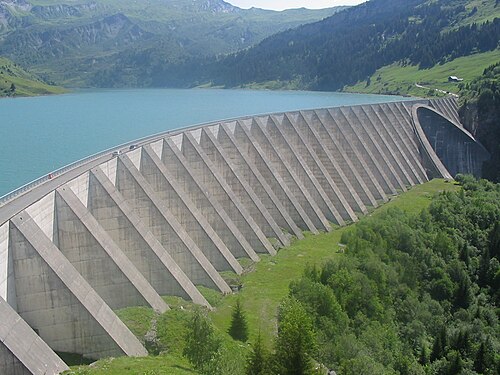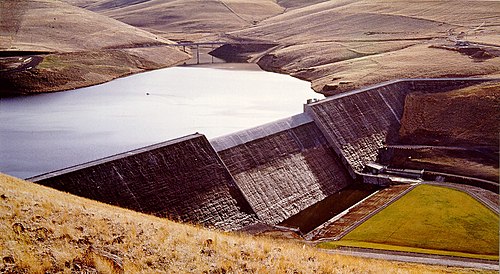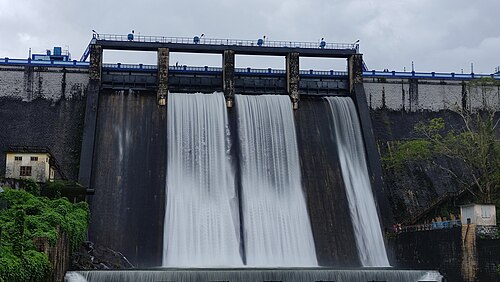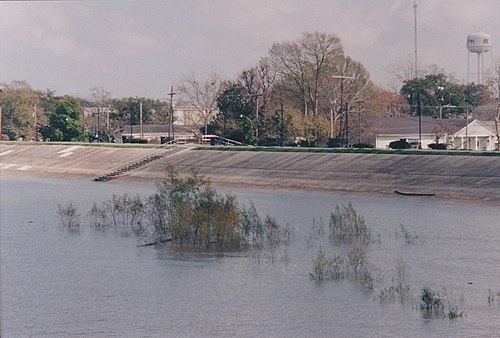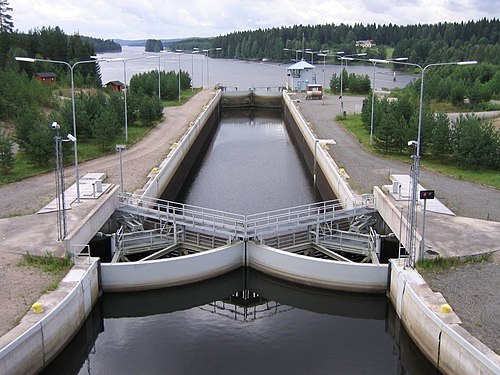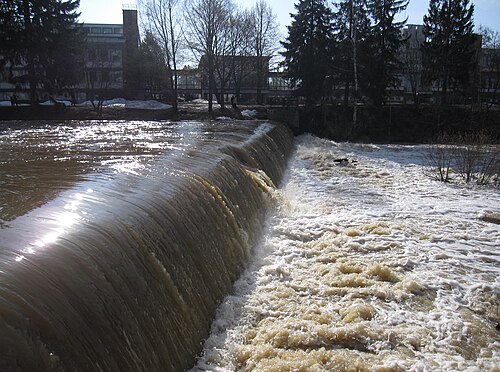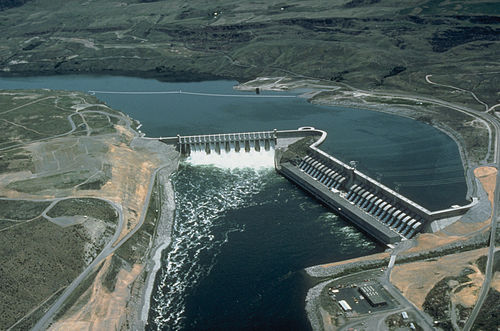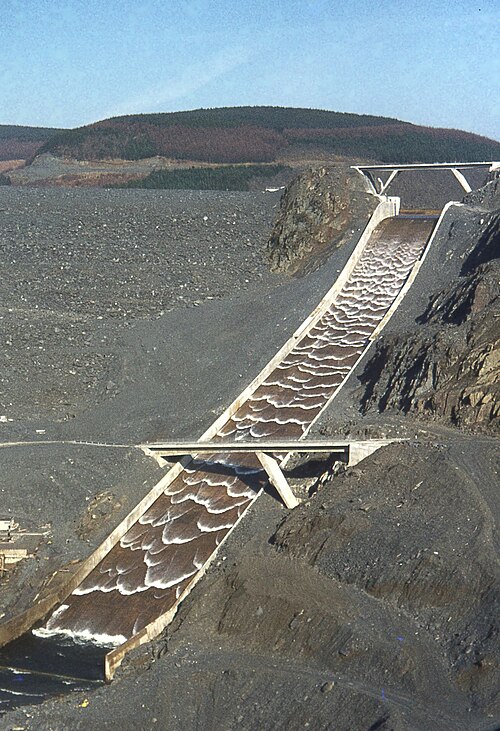AY Honor Dams and Levees Answer Key
1
Both are barriers that hold back or control the movement of water from one side to the other. A dam is situated across the moving water and a levee is situated parallel to the moving water.
2
A beaver is an excellent dam builder. The reason a beaver builds a dam is so that their home, or lodge, is a safe place. They usually build a dam so that a pond is created. Then they build a lodge in the middle of the pond so that it is safe from predators.
The beaver builds their dam by weaving branches together and then putting mud to seal the dam further so water does not flow through the dam. The beaver gets these branches by cutting down trees with their large sharp teeth. Then they take the small and large branches to the place where they want to build the dam. Beavers are hardworking and won’t stop until they build a dam that will create a pond good enough for their lodge.
Natural dams can also be created by debris getting caught in an obstruction that goes across a river. These tend to be temporary dams, since they will easily fail once the debris is dislodged. Other methods of natural dam formation include glacial deposits from a retreating glacier.
3
Benefits:
- Flood control
- Electric Power production
- Irrigation
- Navigation of boats upriver through locks
- Recreation
Potential Negatives:
- Not allowing sediment to flow down the river.
- Hinders or eliminates the passage of migrating fish.
- Possible catastrophic flooding if a dam fails.
- May affect cultural or historical aspects of the people where a dam is built.
4
Earth, concrete, stone, masonry and wood.
5
5a
An arch dam is a concrete that is curved upstream. The pressure of the water against these arch compresses and strengthens the structure.
5b
A buttress dam is a dam with a water tight upstream face that is supported by a series of supports at intervals on the downstream side.
5c
A gravity dam is a dam that is constructed to hold back water by primarily the weight of the dam material alone.
5d
A diversion dam is a dam that diverts all or a portion of the flow of a river from where it would normally flow.
5e
5f
5g
5h
A low-head dam is a relatively short dam (1-15 feet tall) typically concrete and built within a river or stream spanning from bank to bank for the purpose of raising the level of the upstream water, such as for a drinking water intake. The crest of the dam functions as a weir as the water is designed to flow over the dam.
5i
A Run-of-the-river dam is a hydroelectric dam that has little or no water storage, or reservoir behind it. It is not used for flood control.
5j
A saddle dam is an auxiliary dam constructed to confine the reservoir created by a primary dam either to permit a higher water elevation and storage or to limit the extent of a reservoir.
6
6a
A deep clay section beneath a dam to keep water from seeping quickly from upstream to downstream.
6b
A method for fish to swim upstream and negate the harmful impacts of fish migration caused by dams.
6c
A large stone (rip-rap) placed on the toe of the downstream side for additional stability and allow seepage without losing fine soil.
6d
6e
As water seeps through an earthen dam from upstream to downstream side, it can carry fine particles of soil leaving voids which can allow more water at greater velocity to pass, creating larger voids, etc., until water erosion from inside of the dam causes a failure. Evidence of piping is found by muddy water on the downstream face and should be reported immediately to the owner/authorities.
7
Low-head dams have the nickname “killing machines” because many drowning deaths have occurred just downstream of these dams. Under the right conditions, water flows over the dam and may appear tranquil on the surface, but beneath the surface strong water currents stay in a circular pattern making it hard to escape as the current can keep pulling a person under water. To make matters worse, the agitated water is often high in oxygen making the water a much lighter density that is very difficult or even impossible for a person to float or swim. A person should not play around a low head dam when water is flowing over the dam.
8
8a
Migration of fish is altered or stopped. Plants and animals that live in the impounded area are removed or relocated.
8b
The impounded area slows the velocity of water and sediment settles out and can clean the downstream water quality. Impounded water may also stagnate allowing algae blooms and other problem issues.
8c
How can unexpected amounts of large water pass the dam without ruining the dam?
8d
What happens if the dam fails? How are affected persons notified and are there ways to mitigate damage?
8e
How may sensitive or dangerous areas be protected and/or how can the public be kept safe through construction of fences, slope design, etc.?
8f
Analysis of soils and bedrock will dictate design of the dam, including size, type, and construction materials.
8g
Size, shape, and location must consider the design flow rates that the dam is expected to pass in normal operation.
8h
The types of soils available to construct a dam are considered so that the least amount of fill is needed yet is not in danger of sloughing off and ruining the integrity of the dam.
8i
Historical rainfall and upstream tributaries are modeled to know what the expected flows to the dam reservoir might be.
8j
A model predicting the seepage of water through a dam to ensure that water is not permitted to flow fast and erode the dam from the inside.
8k
Almost all dam design and construction projects are regulated by governmental agencies because of the significant impacts.
9
An interview with a Civil or Geotechnical engineer is preferable. If one is not available, the state department of natural resources (or equivalent agencies) have personnel dedicated to this issue. At a minimum, most such agencies have literature for owners of dams on responsibilities and inspection concerns.
Suggested agenda for interview: discuss and understand terms for high-hazard dam, low-hazard dam, design storm, flow net diagrams, emergency overflow, outlet structure, free-board and piping concerns. From this research or interview, understand inspection techniques and how to identify a failing dam.
10
10a
- It is important to discuss and practice safety skills with the pathfinder while around the dam with slopes, wet surfaces, and water. Especially be careful of areas just downstream of the dam as these can be deadly.
- Pathfinders will need to take measurements or best guess estimates in locations that they cannot safely measure. Use scaled aerials to assist in horizontal measurements and head-on photography is helpful to compare a known feature that is X-feet tall and other dimensions may be scaled accordingly.
- Research types of fish that are available in local waters and their swimming patterns and capabilities.
- Research types of fish passage and ladders on the internet. Note horizontal and vertical limitations and which features will fit on the subject dam.
- Plan and profile views may be drawn to show location and how the passage may be constructed.
10b
Note that it says “moving parts,” not “functional system.”
Pathfinders may use LEGO, cardboard/tape or glued plastic. Give them bonus points if they can do this in a wet environment that functions.
10c
10ci
10cii
10ciii
10civ
10cv
11
You can read chapter 5 of Daniel at BibleGateway.
Two other places where dams or the control of water are mentioned in the Bible can include:
He dams up the streams from trickling; What is hidden he brings forth to light.
The gates of the rivers are opened, And the palace is dissolved.
12
Perhaps a theme of how God acts as a dam and catches all that life throws at us and lets them pass slowly so that we can manage it.
No temptation has overtaken you except such as is common to man; but God is faithful, who will not allow you to be tempted beyond what you are able, but with the temptation will also make the way of escape, that you may be able to bear it.
